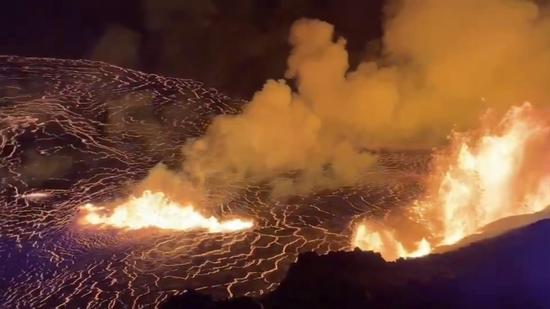Early next month, cold air activity is forecast to remain relatively weak across most of China, resulting in higher-than-average temperatures, an official with the National Climate Center said on Monday.
Xiao Chan, deputy director of the center, said northern regions in the country may experience temperature increases of 3 to 4 C above the seasonal norm, while most other areas will be 1 to 2 C warmer.
However, fluctuations in temperatures will occur due to two waves of cold air that will affect the country, he said during a news conference at China Meteorological Administration.
Meanwhile, most regions will experience sparse rainfall, but eastern parts of Southwest China are likely to see significantly above-average rain and snow accumulation, he added.
A cold front will sweep from north to south from Wednesday to Friday, causing temperature drops of 3 to 6 C in most areas, with localized decreases of up to 8 C in North China.
Light rain is expected in parts of Sichuan Basin, Guizhou and Hunan provinces, while regions at higher altitudes may experience light snow. Heavy snow is forecast in certain areas of northern Xinjiang Uygur autonomous region.
Another wave of cold air will bring temperature decreases of 4 to 6 C to central and eastern regions from Jan 6 to 8. Between Jan 7 and 9, snowfalls are likely in parts of North and Northeast China, Xiao said.
On New Year's Day, most regions in the country will remain dry, with only light snow or localized moderate-to-heavy snow in areas such as northern Xinjiang and parts of the Inner Mongolia autonomous region.
Southern coastal areas, including Guangdong province and Hainan province, will experience light rain.
Travelers should prepare for possible delays and disruptions due to snow and ice in regions such as Northeast China, northern Xinjiang and parts of Southwest China. Local authorities are urged to monitor weather updates and prevent potential risks to agriculture, transportation and power supply.
The Beijing-Tianjin-Hebei region is likely to experience poor air quality and low visibility due to weak winds and stable atmospheric conditions. Travelers and residents are encouraged to ensure precautions for heavy haze, Xiao said.
During the news conference, CMA deputy head Song Shanyun introduced 10 major breakthroughs in the high-quality development of meteorology over the past five years.
China has established the world's largest modern meteorological observation system, which is capable of monitoring 80 percent of meteorological disasters, Song said.
The national land coverage for meteorological monitoring has increased from 29 percent to 44 percent. The detection rate is 84 percent for hail, 80 percent for tornadoes and 85 percent for severe thunderstorms.
In addition, significant progress has been made in leveraging meteorology to support agriculture, transportation, renewable energy, finance and urban management, he said.
For instance, 142 meteorological service centers for agriculture have been established, providing 12 types of meteorological risk warnings in the sector to ensure stable grain production, he added.


















































 京公网安备 11010202009201号
京公网安备 11010202009201号